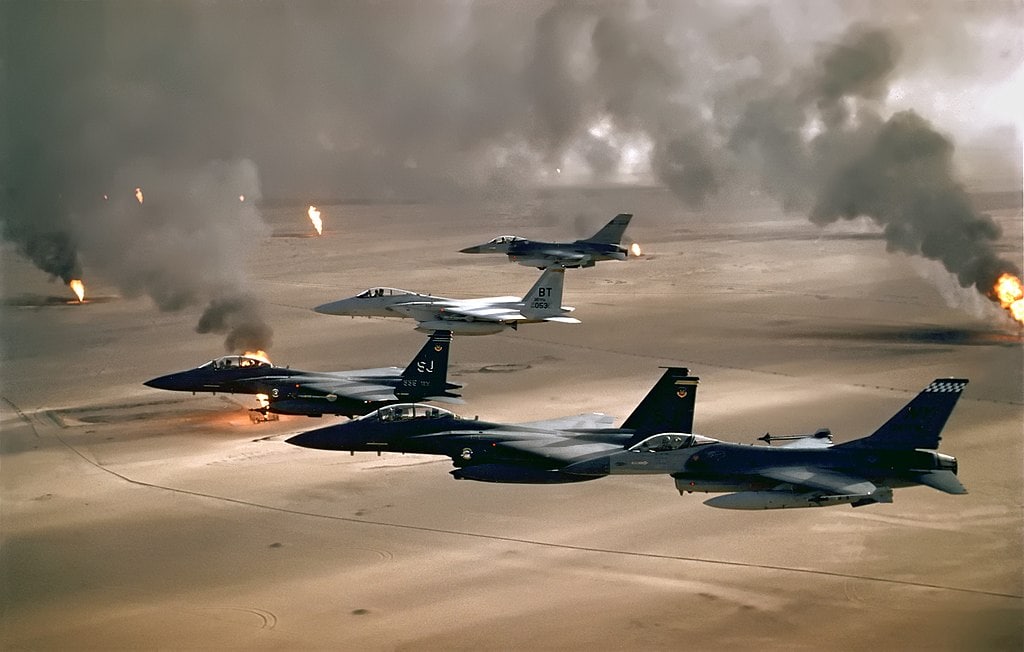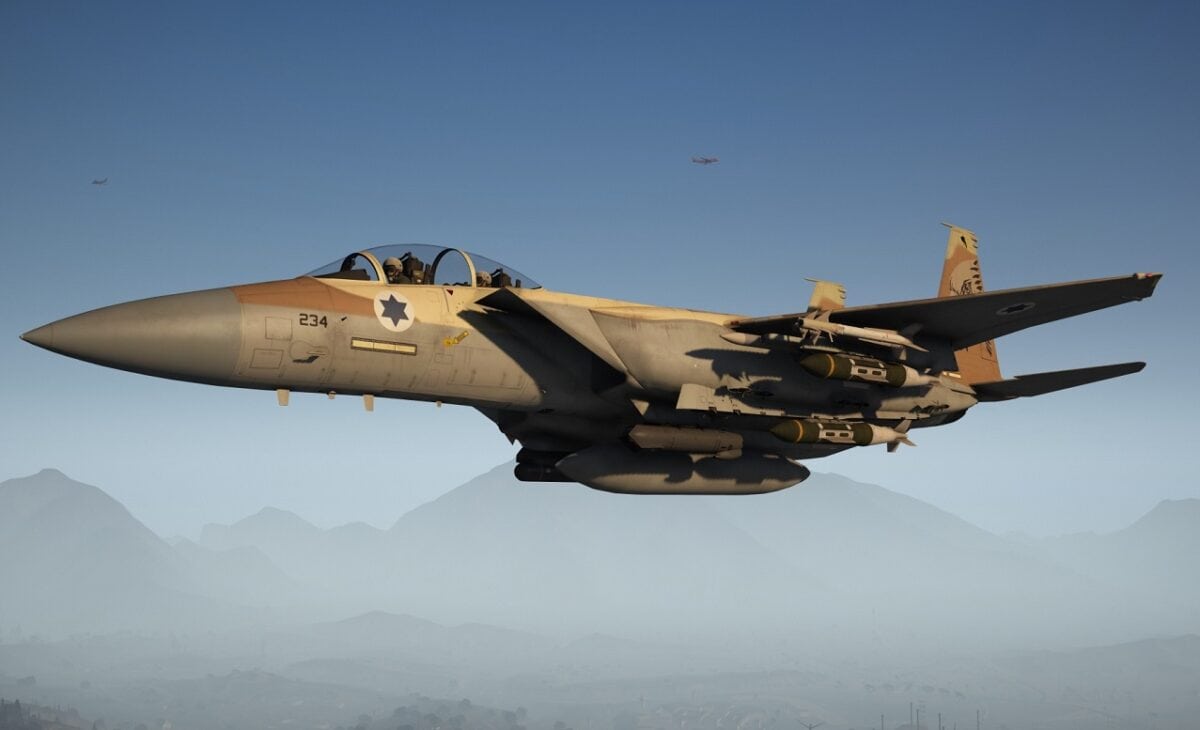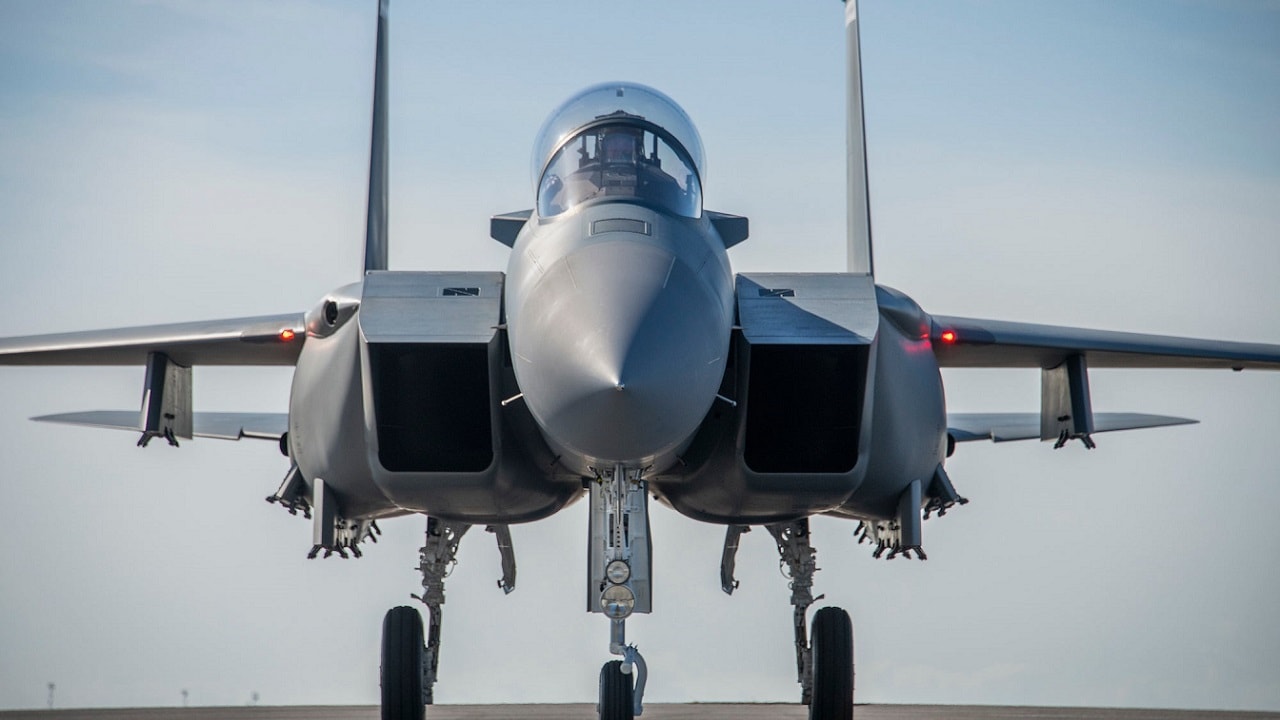2023 is proving a turbulent year for Israel as Prime Minister Benjamin Netanyahu’s attempts to disempower the supreme court have deeply divided Israeli society. It even lead reservists in the Israeli Air Force’s elite 69 “Hammers” Squadron—the only unit to operate the IDF’s unique F-15I Ra’am fighter-bombers—to nearly go on strike.
Nonetheless, the IDF is moving forward with a buy of 25 more of the American warplanes that it’s been mulling for years—aircraft that will considerably enhance the IAF’s ability to strike targets in Iran.
Back in 2019, Israel faced a choice between either tripling its fleet of stealthy Lockheed F-35I stealth fighters—or doubling the numbers of both F-35s and heavy-hitting Boeing F-15I fighter bombers.
Ultimately, the leadership opted for the latter. But while a second F-35I squadron was ordered in 2020, Israel only issued a Letter of Request for new F-15IAs this January. Ordinarily, the first F-15s might only be delivered by 2028, though Israel may request an accelerated schedule.
Israel’s specially customized F-35Is have the stealth and sensors to serve as powerful reconnaissance and precision attack platforms that can act with greater freedom within an enemy’s air defense zone.
However, the not-stealthy F-15s can fly further, carrying a heavier weapons load farther—a particularly important trait should Israel attempt to strike Iran’s fortified nuclear research facilities and missile forces.
Thus the IAF’s operational concept is to have the F-35s quietly creep forth to locate and destroy the most dangerous Iranian air defenses, ‘kicking open the door’ for non-stealthy F-15s with heavy guided bombs to roar in and strike the primary objectives of the raid, likely to include Iranian nuclear and missile-launch facilities. Such tactics were practiced during the Juniper Oak exercise this January in conjunction with the U.S. Air Force.
As Iran may upgrade its air defenses with Su-35 fighters and S-400 surface-to-air missiles from Russia, Israel wants its F-15s to be modernized to withstand such enhanced threats better. Its warplanes will also require improved aerial refueling support if they carry heavier payloads across long distances. Israel is set to receive the first of four new KC-46A Pegasus tanker jets in 2025, with an option for four more.
The new F-15IA, based on the latest F-15EX model, will modernize the F-15E’s sensors and self-defense systems and further increase the maximum number of weapons carried. The choice of an engine from Pratt & Whitney or General Electric appears still to be determined.
The older F-15I aircraft will also be updated to a new standard called the F-15I+, and Israel will retain the option to buy a third squadron of 25 F-15IAs if desired.
The F-15I Ra’am
Israel was an early adopter of the powerful F-15 twin-engine fighter, known as Baz, or “Falcons”, in Israeli service. Though designed only for air-to-air combat, Israel modified the aircraft for ground attack capability to exploit their more extended range and heavier payload capacity than other Israeli fighters.
Those traits were dramatically demonstrated on October 1, 1985, when IAF F-15Ds traversed nearly 1,300 miles across the Mediterranean, aided by 707 tankers and conformal fuel tanks, to bombard the PLO headquarters in Tunis using GBU-15 remotely-controlled glide bombs.

USAF aircraft fly over retreating Iraqi forces in Kuwait during Operation Desert Storm
However, the IAF was interested in the purpose-designed F-15E Strike Eagle two-seat fighter bomber, which debuted successfully in U.S. service during the Gulf War. Not only could F-15Es strike harder and further with a ridiculous 23,000 pounds maximum external load for weapons, fuel, and sensors; it was all-weather capable, had a powerful APG-70 radar able to scan for ground targets; and a backseat Weapon Systems Officer (WSO) able to devote themselves to operating weapons and sensors. Furthermore, aerodynamic conforming extra fuel tanks bolted onto the sides of a Strike Eagle’s engine intakes doubled as bomb racks capable of carrying up to six bombs each.

F-15I. Image Credit: Creative Commons.
Indeed during the Gulf War, Israel was tempted to retaliate against Iraqi Scud missile attacks, but lacked the capability to search for and destroy the truck-based launchers at a distance.
An F-15E buy was finally authorized by Washington after Yitzhak Rabin’s signing of the Oslo Accords with the PLO. The $1.76 billion price tag for an order of 25—with each F-15E costing as much as three F-16 short-range fighters—caused handwringing in Tel Aviv, which ordered 100 customized F-16I ‘Sufa’ fighters instead of more Strike Eagles.
Israel’s F-15Is had their own unique avionics configured to support Israel’s indigenous weapons, reconnaissance and electronic warfare systems. In place of the tail-mounted U.S.-built ALQ-128 electronical warfare warning set (swapped with a counterbalance), it has ‘chisel-edged’ ALQ-135B jamming antennas on each side of its tail booms and extra decoy dispensers. It additionally uses an Israeli Elisra SPS-2110 integrated electronic warfare system combining a self-defense jammer and the SPS-3000 radar warning receivers.
The F-15Is were also outfitted with an AN/APG-70I multi-mode radar—an export downgrade of the F-15E’s APG-70—which can detect fighter-sized targets at 64 miles or rapidly switch to tracking ground targets using its ground-mapping synthetic aperture mode which can detect trucks at 37 miles.
Israeli munition specially integrated on the F-15I include the Python family of short-range infrared-guided air-to-air missiles, and the hulking Popeye I cruise missiles with a range of 56 miles. This 1.5-ton weapon transmits back an optical/infrared video feed to an ASW-55 datalink pod, and is remotely controlled in its terminal phase to hit within 3 meters on average of a designated target.
For night operations, the F-15Is initially relied on AN/AAQ-19 Sharpshooter targeting pods passed on from Israeli F-16s for laser-guided bomb employment. These were replaced with more capable LANTIRN pods including a terrain-following radar and infrared navigation sensor. Later, the Israeli Litening III infrared-optical targeting/reconaissance pod was integrated into F-15s too.
IAF Ra’am pilots did benefit from the DASH helmet-mounted sight years before the U.S. F-15 pilots received their own equivalent. Helmet-mounted sights allow pilots to target missiles simply by looking at the target. That enables ‘high off-boresight’ shots in which the airplane’s nose doesn’t have to point at the target—a formidable advantage in within-visual range combat. The Python 4 missile was specially designed to work with the helmet.
While early F-15Es were powered by two F-100-PW100 engines, the F-15I utilizes the PW-229 sub-model which has a lower bypass ratio, improving thrust by 22% at expense of fuel efficiency.

May 10, 2011. The Israeli Air Force crosses all of Israel from north to south, in honor of the country’s 63rd Independence Day. Pictured: A “Re’em” plane (Boeing 707) refueling a “Ra’am” plane (F-15I) above the beaches of Tel-Aviv.
The modified F-15Is were first flown in 1997, and deliveries to 69 ‘Hammers’ Squadron—a legendary ground attack unit with a historical lineage operating B-17s and later F-4 Phantoms on air defense suppression missions. Based at Hatzerim Airbase, the F-15I saw its first combat mission in January 1999 and has been involved in all of the IAF’s many primary combat operations since, including the 2006 Lebanon War and near continual strikes directed at Syria.
The Ra’am’s most famous mission targeted a Syrian nuclear reactor near Deir-es-Zor under construction with assistance by North Korean scientists. Seven F-15Is, escorted by F-16I fighters, penetrated Syrian airspace aided by a mysterious hacking/jamming exploit that effectively disabled the air defense system. The jets released smart bombs that zeroed in on the facility guided by lasers aimed by Israeli commandos concealed on the ground, definitively ending Syria’s nuclear research program.
Enter the F-15IA
Three decades after its initial F-15I order, Israel wants more Strike Eagles—and better ones. The F-15IAs will feature upgrades integrated into U.S. F-15E Strike Eagles and new F-15EX Eagle II multi-role fighter being procured in limited numbers for the U.S. Air National Guard.
The brand-new F-15IAs are expected to cost $88 million apiece. Thanks to advancements in design and metallurgy, it will have a more extended service live (20,000 hours) and be cheaper to maintain and operate than the earlier F-15s, at roughly $29,000 per flight hour.
According to Boeing, the F-15IAs will be able to remain ‘on station’ over airspace up to 230 miles away for 3-4 hours, or patrol 1-2 hours over airspace 1,151 miles away. An AAQ-33 Sniper targeting pod (infrared and laser sensors) or the latest Litening V pod with higher resolution infrared cameras and an added 62-mile range ground-scanning radar, will provide enhanced targeting capability.
Perhaps the most dramatic hardware upgrade is replacement of the APG-70 with the APG-82(V)1 Active-Electronically Scanned Array radar already installed on U.S. F-15Es. AESA radars are vastly more resistant to jamming, can themselves simultaneously jam and scan enemies thanks to Radio Frequency Tunable Filters (which prevent self-jamming), and are less prone to detection. Even Russia’s Su-35 fighters still lack AESA radars.
Both pilot and WSO will benefit from new extra-large cockpit flat-panel displays that are night-vision compatible. To minimize accident risks, the new jets will feature a Disorientation Recovery Function (avoiding ground collision when the pilot’s incapacitated) and a roll limiter.
Indigenous Israeli components include the data recorders, mission planning computers, and software that will integrate Israeli-built weapons, including the Popeye I land-attack missile as well as the Python short-range heat-seeking missile, and the Derby radar-guided beyond-visual-range missile, both of which attain Mach 4 speeds and can be locked onto target after launch.
The Python-5 has a range of 12 miles, uses both optical and infrared-imaging sensor to acquire and home in on targets, and is effective at all aspects—including even targets behind the launching fighter. The Derby has a range of 31 miles and has a built-in active radar seeker, allowing fire-and-forget use. A 62 mile-range Derby-ER variant with a dual-pulse motor exists too.
Other weapons likely to be integrated are the supersonic Rampage missile (range 155 miles) and the 1,000 and 2,000-pound bombs upgraded with SPICE kits allowing three targeting options: optical/infrared image-matching, GPS, and TV remote-control. Newer U.S. weapons unavailable when Israel procured its F-15Is, like the GBU-39 and JSOW glide bombs, will also become options with the F-15IA and F-15I+. Boeing also obliquely refers to the capability to mount 3.5-ton hypersonic missiles on the F-15IA.
One potential headwind for the F-15IA is that the F-15EX’s future is unclear after the initial U.S. order was downsized from 144 to just 80 aircraft, then in March re-upped it to 104 aircraft, enough for four squadrons. The reduced fleet may be too small to be economical, with an effective unit price possibly inflating by 50% for an 80-aircraft buy.
Should the Pentagon cancel the F-15EX that would reduce the economy of scale and likely increase prices for components in common with the F-15IA. However, the Israeli F-15IA buy conversely could help reduce costs and risks of F-15EX procurement.
Regardless, Israel is unlikely to give up on its new Ra’am. Their delivery will eventually double the IAF’s assets capable of delivering heavy strikes in an air campaign aimed at Iran’s nuclear program and missile forces.
Author Biography and Expertise
Sébastien Roblin has written on the technical, historical, and political aspects of international security and conflict for publications including 19FortyFive, Popular Mechanics, The National Interest, MSNBC, CNN, Forbes.com, Inside Unmanned Systems and War is Boring. He holds a Master’s degree from Georgetown University and served with the Peace Corps in China. You can follow his articles on Twitter. Roblin is Long Form Editor for 19FortyFive.

